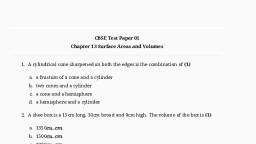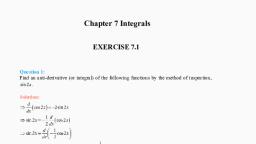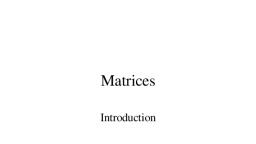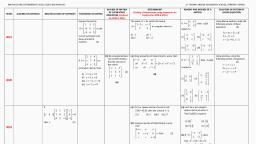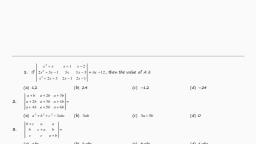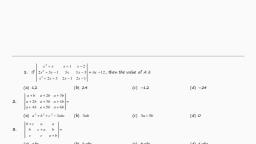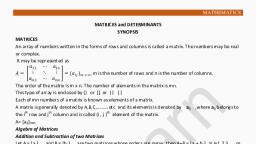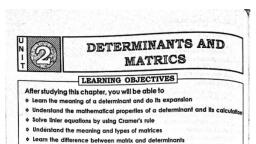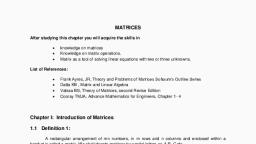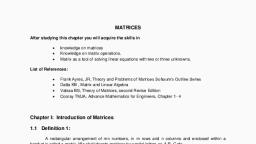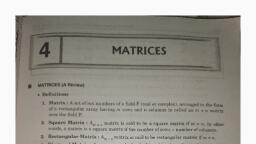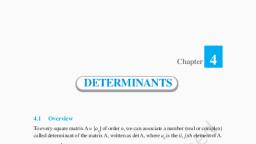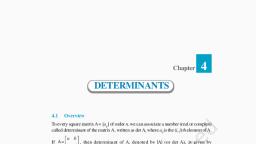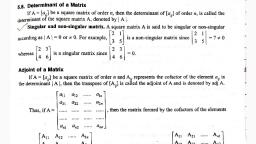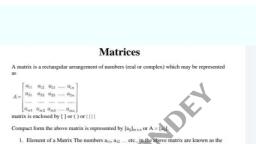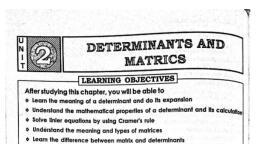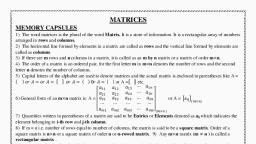Page 1 :
Determinants, , , Determinant of a square matrix A is denoted by, , , , Determinant of a matrix, , , , Determinant of a matrix, , , , Determinant of a matrix, , or det (A)., , is given by,, , is given by (expanding along R1):, , Similarly, we can find the determinant of A by expanding along any other row or along any, column., , , The various properties of determinants are as follows:, , o, , If the rows and the columns of a square matrix are interchanged, then the value of the, determinant remains unchanged., Example:, , This property is same as saying, if A is a square matrix, then, o, , If we interchange any two rows (or columns), then sign of determinant changes., Example:
Page 2 :
o, , If any two rows or any two columns of a determinant are identical or proportional, then the, value of the determinant is zero., Example:, , o, , If each element of a row or a column of determinant is multiplied by a constant a, then its, determinant value gets multiplied by a., Example: Area of a triangle with vertices (x1, y1), (x2, y2), and (x3, y3) is given by,, , Since area is always positive, we take the absolute value of the above determinant., , , , , , If A is a square matrix, then A (adj A) = (adj A) A = |A| I, A square matrix A is said to be singular, if A=0, A square matrix A is said to be non-singular, if, If A and B are square matrices of same order, then, Therefore, if A and B are non-singular matrices of same order, then AB and BA are also nonsingular matrices of same order., , , , If A is a non-singular matrix of order n, then |adj A| = |A|n−1, , , , A square matrix A is invertible, if and only if A is non-singular and inverse of A is given by, the formula:
Page 3 :
, , , , , If A is a square matrix, then A (adjA) = (adjA) A = |A| I, A square matrix A is said to be singular, if, A square matrix A is said to be non-singular, if, If A and B are square matrices of same order, then, Therefore, if A and B are non-singular matrices of same order, then AB and BA are also nonsingular matrices of same order., , , , , If A is a non-singular matrix of order n, then, A square matrix A is invertible, if and only if A is non-singular and inverse of A is given by, the formula:, , , , The system of following linear equations, where, , , , A system of linear equations is said to be consistent, if its solution (one or more) exists., , , , A system of linear equations is said to be inconsistent, if its solution does not exist., , , , Unique solution of the equation AX = B is given by X = A–1 B, where, , , , For a square matrix A in equation AX = B, if, , o, o, o, , can be written as AX = B,, , , then there exists a unique solution, and (adjA) B ≠ O, then no solution exists, and (adjA) B ≠ O, then the system may or may not be consistent, , Example 2: Solve the following system of linear equations:, , Solution: The given system of equations can be written in the form AX = B, where
Page 4 :
Now,, Therefore, A is a non-singular matrix and hence, the given system of linear equations has, only one solution., Now,, , x = 1, y = 3, and z = 5















